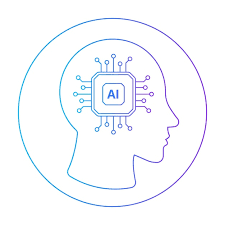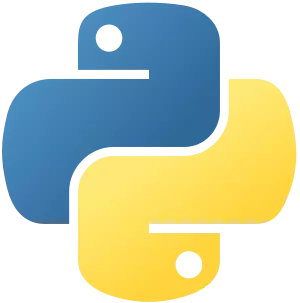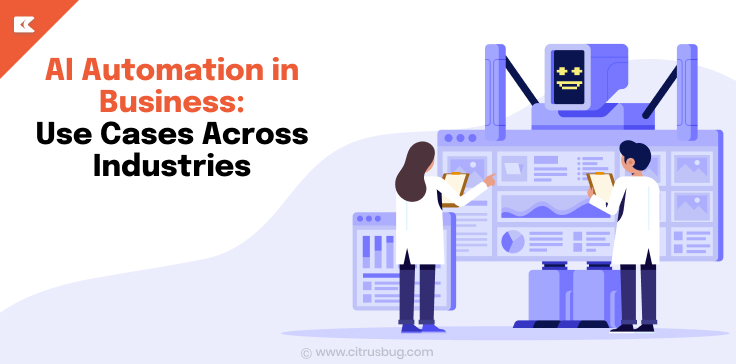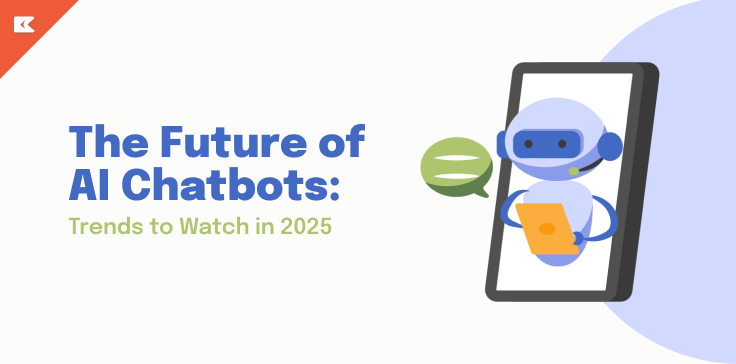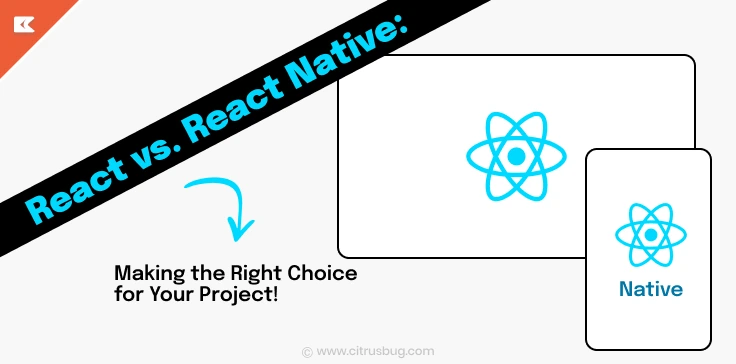11 Proven Minimum Viable Product (MVP) Examples to Validate Your Product Idea
- December 1, 2023
-
4018 Views
- by Ishan Vyas
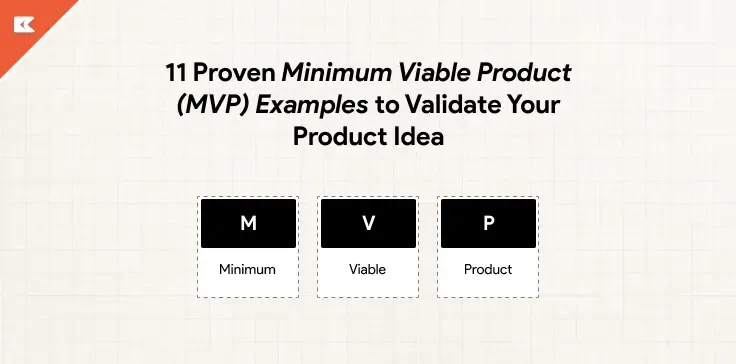
In this article, we will go through the 11 successful minimum viable product examples based on types.
But before we dive deep into minimum viable product examples, first let’s see what exactly a minimum viable product is and what it isn’t.
What is an MVP and What It’s Not
Minimum Viable Product (MVP) is a basic version of a product with essential features, developed quickly to validate ideas and gather user feedback. It aims to address a specific problem for early adopters and reduce development risks, while allowing for a more refined and successful final product.
Unlike prototypes, MVPs are ready-to-launch versions designed to validate ideas and user needs. It serves as a learning tool, guiding iterative improvements based on user insights.
MVP development doesn’t guarantee success but enhances the chances by minimizing resources invested in potentially unpopular products. It also allows you to test core functionalities and gather valuable user feedback early on. This feedback can then be incorporated into a more refined process of digital Product Development, ultimately leading to a successful final product.
An MVP is similar to
- Minimum marketable product
- Proof of concept
- Rough draft
But there are a few differentiations that set all three apart.
Minimum Viable Products vs Minimum Marketable Product vs Proof of Concept
Minimum Viable Product (MVP), Minimum Marketable Product (MMP), and Proof of Concept (PoC) differ in their purposes and stages in product development.
- An MVP is the initial basic version aimed at gathering early adopter feedback.
- The MMP comes after the MVP, incorporating more features for market readiness.
- A PoC is a small-scale test to verify the feasibility of an idea before full-scale development. Each serves a distinct role in the product development process.
- Why Build Minimum Viable Product
Building a minimum viable product facilitates quicker market entry, user feedback, and iterative improvement while reducing costs and attracting potential investors.
Other reasons to build an MVP include:
- Faster time-to-market
- Gathering valuable user feedback
- Focusing on core features
- Attracting early adopters
- Testing the product concept
- Embracing validated learning
- Reducing development costs
- Achieving faster revenue generation, and more.
Get it validated by the popular MVP examples in the next section.
11 Minimum Viable Product Examples Based on Types
1. Landing Page as MVP
The landing page (minimum viable product) MVP, or “sell before you build,” is a simple approach to creating a landing page for a product yet to be developed. It requires fewer resources and time, validating the product idea and generating interest from potential customers before full investment. The landing page serves as a preliminary sales pitch to gauge market demand, collect user data, and make informed decisions based on feedback and interest. Utilizing tools like the WP Quiz Plugin can enhance user engagement and interaction on the landing page, providing valuable insights for further product development.
Best suited for: Early-stage product validation, market testing, and when limited resources or time constraints are present.
Buffer: One of the Successful Minimum Viable Product Examples
Buffer validated its social media scheduling app idea using landing page (minimum viable product)MVPs. It created and tested three landing pages with different information and functionality:
- The first landing page had a headline, a subheading, a sign-up form, and a blog post link.
- The second one added a button for pricing plans and a page for choosing a plan and signing up.
- The third one added a button for connecting with Twitter and a page for authorizing Buffer and accessing the dashboard.
Using landing pages, it tested its product idea and collected data and feedback. It improved its product until it fit the market. And grew its customers and revenue with its email list before launching.
2. Demo Videos as MVP/ Explainer Videos as MVP Examples
If you want to show how your product or service would work, what problem it would solve, and why it would be valuable to your customers, build a demo or explainer video MVP. It. lets you demonstrate your concept visually and test the market demand and feedback, and you can even create an AI video to enhance the presentation. You can also use a ChatGPT presentation to present your product to potential investors, customers, and partners in a concise and engaging manner.
Best suited for: Products or services that are complex, novel, or not yet fully developed, and need a clear explanation of how it works and what benefits it offers.
Crazy Egg: A Minimum Viable Product Examples of Explainer Videos
Crazy Egg, a brand offering a web analytics tool, created a demo video that explained the problem it was solving, the solution it was offering, and the benefits of using its tool. It also showed how the tool works, using features like heatmaps, scroll maps, overlay reports, and confetti. It used humor and animation to make its video more appealing and memorable.
According to its creator Demo Duck, “it helped Crazy Egg increase conversion rates by 64% and generate an additional $21,000 in monthly revenue”
3. Software Prototype as MVP
A software prototype is a (minimum viable product)MVP where you use existing tools and services to create a working model of your product or service. This technique lets you test the functionality and usability of your product or service, and get feedback from users, without building anything from scratch.
Best suited for: Testing the appeal of the application to its target audience before investing resources, efforts, and time.
Uber: One of the Popular Software Prototype MVP Examples
Back when Uber was founded, it used tools and services like Google Maps, Twilio, and Braintree to build its platform. It then launched it in San Francisco in 2010 with three cars.
Uber measured and learned from its customers’ demand, usage, and feedback. It also attracted investors, customers, and media. Based on data and insights, it improved its product and added features like live tracking, surge pricing, ratings, etc. Lastly, it expanded and diversified its service to more cities and countries, offering UberX, UberPool, UberEats, etc.
4. Single Feature MVP
A single feature (Minimum viable product)MVP is a product that solves a problem for customers. The idea behind it is that customers need a painkiller feature that can relieve their problem. The single feature MVP also helps the product stand out from the competition and attract the attention of the potential customers.
Best suited for: evaluating the viability and popularity of the app among the potential users.
Pinterest: A Single Feature MVP Product Development
Well, do you know that Pinterest started as a simple app called Tote? The core functionality of the app lets users save images from websites to its boards. This was its single feature MVP, which tested its hypothesis that people would enjoy creating and browsing visual collections of its interests.
It learned from its early adopters that users also wanted to see what others were pinning, and they preferred a web-based platform over a mobile app. It pivoted from Tote to Pinterest, and added more features and categories to improve the user experience and engagement.
By focusing on just one core feature that delivered the core value proposition of the product, Pinterest was able to iterate and improve its product over time based on data and insights.
5. Product Design MVP
A product design (Minimum viable product)MVP tests and improves the design and user experience of a product. It uses sketches, mockups, and wireframes to show the concept, appearance, and structure of a product. UX designers create and iterate these elements based on feedback and data.
Best suited for: businesses who want to test and improve the design and user experience of their product or those whose end goals are mobile platforms like Android MVP.
Memento: An Example of Product Design MVP
Memento is an app that allows people to capture their life stories. The app originated as a basic sketch, with a vague idea of what the designers planned to add. After the initial launch, they received feedback from the users and modified the app accordingly to make it function well.
6. Single-market MVP
A single market MVP is a product that focuses on providing products to one specific market group, such as a city. It tests the business model, demand, and feedback for that market segment. It also makes the product unique and attractive to the customers.
Best suited for: Businesses or entrepreneurs who have a product idea that can solve a problem or meet a need for a specific and well-defined market segment, such as a specific target audience, geographic location, etc.
Airbnb: A Single-Market MVP Example
Airbnb started by launching a simple website that featured three listings for one core market group, i.e., San Francisco users.
This was its single market (Minimum Viable Product)MVP, which tested its hypothesis that people would be interested in renting out their spare rooms or homes to travelers. It learned from its early adopters that they also wanted to see reviews, ratings, and messaging features. Airbnb also learned that it needed to improve its trust and safety measures.
By focusing on one specific market group that had a common problem or need, Airbnb was able to iterate and improve its product over time based on data and insights.
Today, it’s a global platform that offers unique accommodations around the world.
7. Piecemeal MVP
A piecemeal MVP is a way of creating a new product by using existing tools and functionalities that are already available in the market. Instead of building everything from scratch, you can use different components that already work and combine them in a creative way to deliver your value proposition to your customers.
Best suited for: Organizations that do not have enough resources or infrastructure to build products from scratch.
Groupon: A Classic Piecemeal MVP Example
Groupon is a place where you can find amazing deals on things to do, see, eat, and buy in your area. It started as a simple idea: use what’s already available to create and send coupons to customers. It didn’t need to make its own software or platform. It just wanted to test its idea and see what customers thought.
By developing a piecemeal (Minimum Viable Product)MVP, it learned who its customers were, what they wanted, and how to make money from them. It kept improving its product based on customer feedback. Groupon became a huge success with millions of happy customers and merchants.
8. Concierge MVP
A concierge MVP is a type of minimum viable product that involves manually solving the customer’s problems. Instead of building a complex product or service, you can use existing tools and human resources to deliver your value proposition to your customers. This way, you can test your idea and get feedback from your customers quickly and easily.
A concierge MVP is a great way to validate your assumptions and learn about your customer’s needs and preferences.
Best suited for: Businesses that seek to acquire and analyze customers before launching their product.
Food on The Table: One Of The Concierge Minimum Viable Product Examples
Food on the Table is one of the concierge MVP examples that it manually creates personalized meal plans and shopping lists for customers.
The founder, Manuel Rosso, interviewed customers about their food needs and offered them a subscription service. Then, he used Excel and email to send them customized plans and lists based on their preferences. He also followed up with them regularly to get feedback and make adjustments.
By doing this, he was able to validate his value proposition and learn about his customers without building a complex product. Moreover, he earned trust and loyalty by providing quality service.
9. Internal First Minimum Viable Product
An Internal-First (Minimum Viable Product)
MVP is a type of MVP product launched to an internal group of users, such as employees, stakeholders, or beta testers. This approach tests the product’s functionality, usability, and value proposition with a smaller and more controlled target audience before releasing it to the public. The product team can collect feedback, identify bugs, and make improvements without risking external customers’ reputation or satisfaction. An internal-first MVP can also generate internal buy-in and support for the product vision and roadmap.
Best suited for: Products that are complex, novel, large, or uncertain, and need extensive testing and validation with a smaller and more controlled target audience before launching to the public.
Slack: One of the popular internal first MVP examples
Slack – the popular collaboration tool was originally an internal communication tool for a gaming company called Tiny Speck.
The company, Tiny Speck, was making an online game called Glitch in 2011. They needed a way to communicate and collaborate with their remote team. They built a chat app that integrated with other services like Google Drive, Dropbox, and GitHub. However, they found out that their chat app was more valuable than their game, which had few users.
By launching it with their team, they tested Slack’s functionality, usability, and value proposition internally, improved it based on feedback and bugs, and also generated internal buy-in and support. As a result, Slack became a popular chat and productivity tool.
10. Pre-order Minimum Viable Product
This is a type of minimum viable product that allows customers to pre-order a product or service before it is fully developed or released. This way, the creators can validate customer demand and generate revenue before investing in full-scale development.
Best suited for: Building customer loyalty and anticipation for the product or service.
Oculus Rift: A pre-order minimum viable product example
Oculus Rift is a VR headset that launched as a pre-order (minimum viable product)MVP on Kickstarter in 2012. It raised over $2.4 million from 9,522 backers who received a developer kit, a device to create VR content.
The creator, Luckey, validated customer demand and generated revenue by launching Oculus Rift before developing a full product. He also received feedback, improved the product, and built customer loyalty and anticipation.
Oculus Rift became one of the most popular VR products in the world, acquired by Facebook for $2 billion in 2014.
11. Wizard of OZ MVP
A wizard of Oz MVP is a fake system that looks like a real one. You test your idea without building a complex system. You have a human doing the work secretly. The user thinks they are using a real system. You can see if your idea is good and what your customers think. You can also save time and money.
Best suited for: Testing the product’s benefit by using minimal resources and limited features.
Zappos: An example of wizard of OZ minimum viable product examples
Zappos was a website that sold shoes from local stores. The founder would buy and ship the shoes to the customer, who did not know that the website had no inventory or distribution system.
This way, Zappos tested the customer demand and feedback for online shoe retailing without building a complex system. Zappos later became one of the most successful online shoe retailers, acquired by Amazon for $1.2 billion in 2009.
Selecting the Best MVP Development Company – Points to Consider
So far, we have seen 11 best minimum viable product examples in 2023 that show how different services, companies, apps, and business ideas started off as MVPs and established themselves well among their audience.
However, to build an MVP, you need the right partner.
To choose the right MVP development company:
- Look for a company with experience and expertise in delivering successful (minimum viable product)MVPs
- Ensure they have skilled MVP development team
- Check their portfolio, testimonials, and case studies
- Choose a company with clear communication and collaboration with you and your team
- They should use agile methods for fast and flexible delivery
- Compare cost and quality of different companies and find the best value for your money
- They should offer high-quality standards and post-launch support
- Select a company that shares your vision, culture, and goals
- They should provide strategic guidance and innovation
As you embark on shaping your product, remember we are here to help. If you need any assistance, you may connect with us, we as an experienced MVP development company can transform your innovative ideas into tangible success stories. See it by yourself if we are the right partner for you.
Your MVP is not just a stepping stone; it symbolizes both innovation and dedication. Let’s craft it into a success story together.





 SaaS Development
SaaS Development Web Application Development
Web Application Development Mobile Application Development
Mobile Application Development Custom Software Development
Custom Software Development Cloud Development
Cloud Development DevOps Development
DevOps Development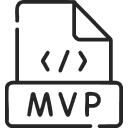 MVP Development
MVP Development Digital Product Development
Digital Product Development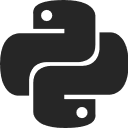 Hire Python Developers
Hire Python Developers Hire Django Developers
Hire Django Developers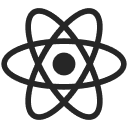 Hire ReactJS Developers
Hire ReactJS Developers Hire AngularJS Developers
Hire AngularJS Developers Hire VueJS Developers
Hire VueJS Developers Hire Full Stack Developers
Hire Full Stack Developers Hire Back End Developers
Hire Back End Developers Hire Front End Developers
Hire Front End Developers AI Healthcare Software Development & Consulting
AI Healthcare Software Development & Consulting Healthcare App Development
Healthcare App Development EHR Software Development
EHR Software Development Healthcare AI Chatbot Development
Healthcare AI Chatbot Development Telemedicine App Development Company
Telemedicine App Development Company Medical Billing Software Development
Medical Billing Software Development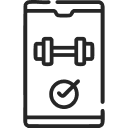 Fitness App Development
Fitness App Development RPM Software Development
RPM Software Development Medical Device Software Development
Medical Device Software Development Patient Engagement Software Solutions
Patient Engagement Software Solutions Healthcare IT Consulting
Healthcare IT Consulting Mental Health App Development
Mental Health App Development Lending Software Development Services
Lending Software Development Services Payment Gateway Software Development
Payment Gateway Software Development Accounting Software Development
Accounting Software Development Mobile Banking Software Development
Mobile Banking Software Development Supply Chain Management Software Development
Supply Chain Management Software Development Fleet Management Software Development
Fleet Management Software Development Warehouse Management Software Development
Warehouse Management Software Development LMS Development
LMS Development Education App Development
Education App Development Inventory Management Software Development
Inventory Management Software Development Property Management Software Development
Property Management Software Development Real Estate CRM Software Development
Real Estate CRM Software Development Real Estate Document Management Software
Real Estate Document Management Software Construction App Development
Construction App Development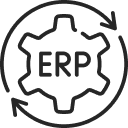 Construction ERP Software Development
Construction ERP Software Development







